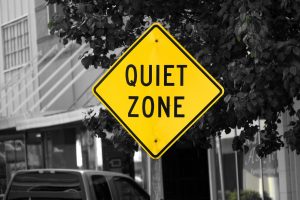No products in the cart.
Office Soundproofing for Open Office Layouts

30
Oct
Frank Lloyd Wright’s revolutionary idea of the open floor plan was meant to change architecture and office layouts for the better. More light, open space, and easy collaboration between coworkers were supposed to increase productivity and foster a community feel at work. However, now it might be necessary to start soundproofing open office spaces because they aren’t as desired anymore for a couple reasons.
Wright’s original designs for the open floor plan included expensive materials and a meticulous setup that many architects today have modified to cut costs and building time. However, cutting corners has created problems and given disadvantages to this type of office. The biggest one? Lack of speech privacy.
A report by Gensler found that only 1 in 4 U.S. workers are in optimal workplace environments, and that over 50% of respondents in their study were distracted by others and could not focus at work. In an open layout, conversations are not confined to only the people involved and everyone is disturbed by noise traveling throughout the office.
Easiest Soundproofing Practices for Open Offices
There are some ways that you can counteract the downside of working in an open office space. We have a few suggestions to help you keep your employees happy and productive at the office without starting a renovation project.
Balance of Open Office Space and Private Areas
Not everyone enjoys working in an open office space. Some people prefer silence while they work and others just want their privacy. Whether it’s because they want more privacy, or they just can’t focus with too much background noise, employees should be able to choose an area of the office to work in that allows them to do their best work.
It’s important to balance open spaces that encourage collaboration with individual spaces where employees can focus and work by themselves. Creating a balance will allow workers to choose which space is best for the particular project they’re working on or maybe just what mood they’re in that day.
Create Designated Quiet Spaces In The Office

Some people need silence while they work in order to be as productive as they can possibly be.
Even in an open office, make sure to give your employees places where they can go to get away from the noise. It doesn’t always have to involve soundproofing the whole office! A comfy break room, relaxing coffee corner, or meditation room are just a few examples. Try hanging quiet zone signs around these spaces so everyone is aware of them and respects them.
Also, consider putting door sweeps between the door and the floor or seals around the perimeter of the door to keep extra noise out of those special quiet spaces.
Office Soundproofing 101: Separate Acoustic Spaces
Something as simple as placing screens or blockers between open workspaces can drastically decrease noise from traveling between them. Our sound blocking curtain can be hung to help keep conversations private while also keeping disturbing noise out of a quiet area. The AcoustiTrac can be easily pulled open or shut along a track to switch between collaborative or individual spaces, as previously mentioned.
Did you implement any of these ideas in your open plan office that worked for you? Let us know in the comments below.
See Also: Soundproofing Curtains for Hotels
Use Sound Masking in the Office
If you aren’t able to make any of the above changes in the office for people to be able to work in different environments, you can use sound masking throughout the whole office. Now, if you can’t install a commercial sound masking system either then employees can have the option to get a white noise machine in their own office if they want one.
White noise machines really help mask any distracting background noise, so this would be ideal for the people who are easily distracted by background noise.
Office Soundproofing Made Easy
You don’t need to do an entire office renovation to “soundproof” the office. There are ways to make it seem soundproofed for those who don’t work well with background noise, and for it to stay the same for those who don’t mind it. Just follow our simple steps to a work environment that benefits all of the employees:
- Have a balance of open spaces and private areas
- Create designated quiet areas
- Separate acoustic spaces with soundproof curtains
- If all else fails, install sound masking
